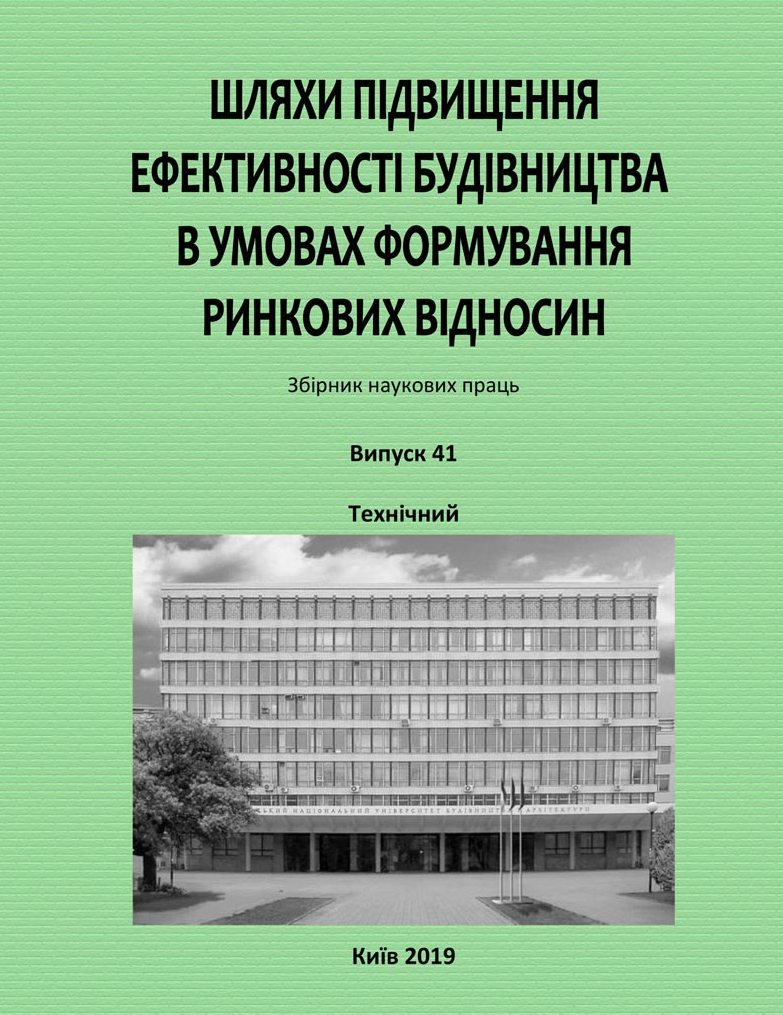Estimation of mechanical properties of modified cement stone by nanoindenting method
DOI:
https://doi.org/10.32347/2707-501x.2019.41.71-80Keywords:
nanoindentation method, cement samples, hardness, elastic modulus, nanoindenter, histogram, phaseAbstract
The mechanical properties of materials began to appear higher requirements. The development of various technologies has become widespread in the modern world, which has contributed to the creation of new building materials. The nanoindentation method has become an alternative approach to the study of the mechanical properties of materials at the nanoscale. In this case, it is not the dimensions of the sample that are reduced, but the size of the deformed region. During nanoindentation, most solid and superhard non-metallic materials are deformed elastically-plastic, which allows characterizing such mechanical properties as hardness and elastic modulus.
Based on an analysis of literature, it was found that C-S-H exists in at least three different structural forms: low, high, and ultrahigh densities, which have different average values of hardness and hardness and various volume concentrations. The average values of hardness and hardness turned out to be properties inherent in the С–S–H structure, which do not change in various materials based on cement.
In this work, the nanoindentation method was used, preliminary results of the studied cement samples were obtained. The studies were carried out by an automated Hysitron TI 950 TriboIndenter nanoindent. During mechanical measurements, a diamond probe tip was used.
It was found that the elastic modulus M increases in samples that contain a complex additive containing nanosized particles. The effect is also observed when a sol of nanosilica or carbon nanomaterial is introduced into a plasticizing additive. The results are presented by histograms of the distribution of nanoindentation points modulo elasticity E and stiffness H.
References
Hou, P. et al. (2013). Vliyaniye modifikatsii kolloidnogo nanoSiO2 na gidratatsiyu tsementa i yego geleobrazuyushchiye svoystva. Kompozity, chast' B: Mashinostroyeniye, T 45. № 1. - pp. 440-448.
Eberkhardshtayner, Y., Zhdanok, S., Khrustalev, B., Batyanovskiy, Ye., Leonovich, S. & Samtsov, P. (2012). Izucheniye vliyaniya nanorazmernykh dobavok na mekhanicheskoye povedeniye tsementnykh blokov. Nauka i tekhnika, №1. рр. 52-55.
Constantinides, G., Ulm, F.J. (2007). The nanogranular nature of C – S – H. Journal of the Mechanics and Physics of Solids, Vol. 55. Issue 1. p. 64-90.
Singh, LP., Zhu, W., Howind, T., & Sharma, U. (2017). Quantification and characterization of C-S-H in silica nanoparticles incorporated cementitious system. Cement & Concrete Composites, 79, 106-116
Shushkov, A.A., Vakhrushev, A.V. (2018). Metody opredeleniya mekhanicheskikh svoystv nanostruktur. Khimicheskaya fizika i mezoskopiya, Tom. 20, № 1. - рр. 57-71.
Lagutina, I.Yu. (2017). Perspektivy ispol'zovaniya nanotekhnologiy v stroitel'noy otrasli: vdavlivaniye i fotokataliz. Volzhskiy nauchnyy vestnik, №. 1 (65). - рр. 29-30.
Potapov, V.V., Efimenko, Y.V., Gorev, D.S. (2019). Determination of the amount of Ca(OH)2 bound by additive nano-SiO2 in cement matrices. Nanotehnologii v stroitel’stve = Nanotechnologies in Construction. Vol. 11, no. 4, pp. 415–432.
Potapov, V.V., Grushevskaya, Ye.N., Leonovich, S.N. (2017). Modifikatsiya gidrotermal'nykh nanokremnistykh materialov na osnove tsementa. Stroitel'nyye materialy. №7. рр. 4-9.
Zhdanok, S.A., Polonina, Ye.N., Leonovich, S.N., Khrustalev, B.M., Koleda, Ye.A. (2019). Fiziko-mekhanicheskiye kharakteristiki betona, modifitsirovannogo plastifitsiruyushchey dobavkoy na osnove nanostrukturirovannogo ugleroda. Inzhenernyy fizicheskiy zhurnal, Vol. 92, №1 (yanvar'-fevral'). - рр.14-20.
Zhdanok, S. A., Polonina, Ye. N., Leonovich, S.N., Khrustalev, B.M., Koleda Ye.A. (2019). Vliyaniye plastifitsiruyushchey dobavki na osnove nanostrukturirovannogo ugleroda v samouplotnyayushcheysya betonnoy smesi na yeye tekhnologicheskiye svoystva. Inzhenerno-fizicheskiy zhurnal, Vol. 92, № 2 (mart-aprel'). рр.391-396.
Downloads
How to Cite
Issue
Section
License
Copyright (c) 2020 N. Polonina, S. Leonovich

This work is licensed under a Creative Commons Attribution 4.0 International License.
Authors who publish with this journal agree to the following terms:
- Authors retain copyright and grant the journal right of first publication with the work simultaneously licensed under a Creative Commons Attribution License that allows others to share the work with an acknowledgement of the work's authorship and initial publication in this journal.
- Authors are able to enter into separate, additional contractual arrangements for the non-exclusive distribution of the journal's published version of the work (e.g., post it to an institutional repository or publish it in a book), with an acknowledgement of its initial publication in this journal.
- Authors are permitted and encouraged to post their work online (e.g., in institutional repositories or on their website) prior to and during the submission process, as it can lead to productive exchanges, as well as earlier and greater citation of published work (See The Effect of Open Access).

